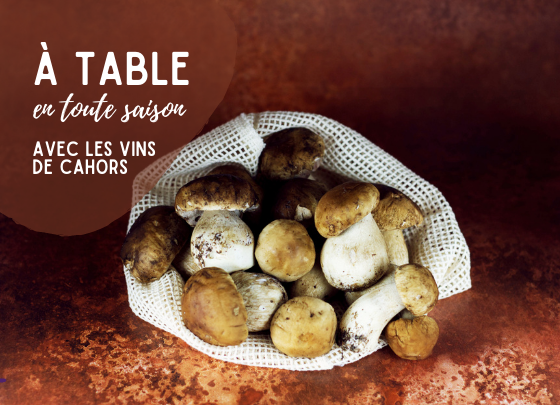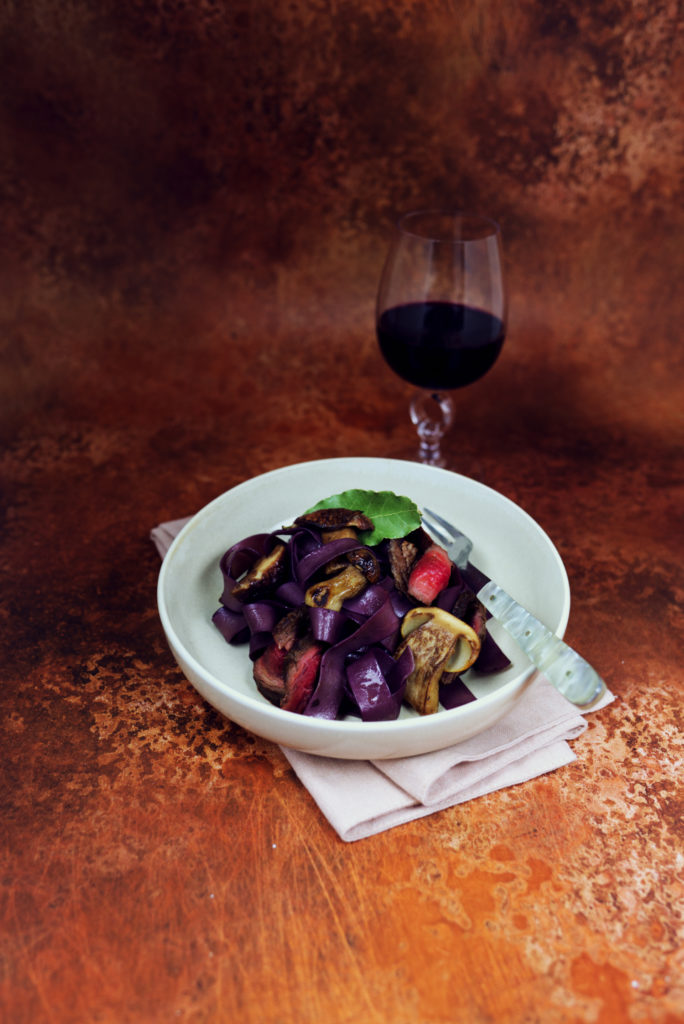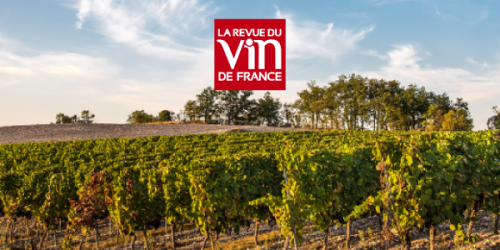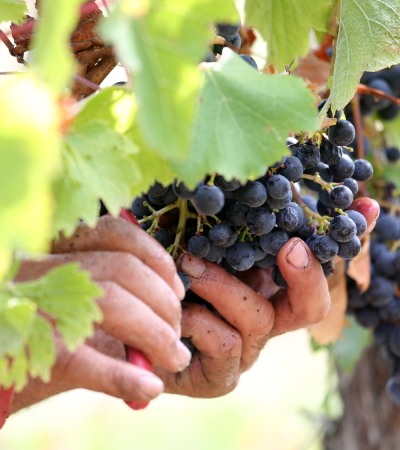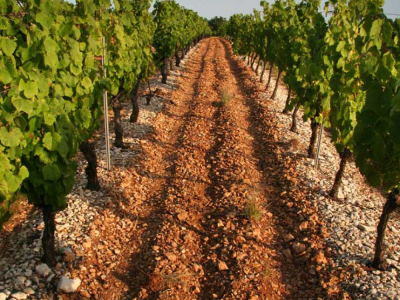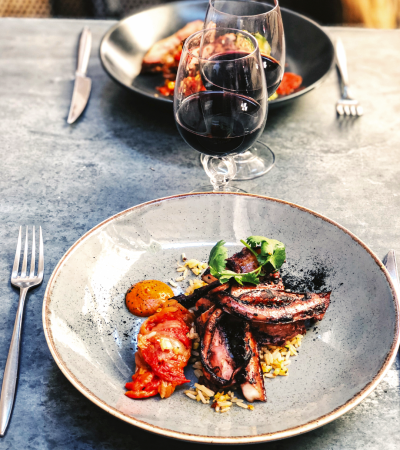𝐖𝐡𝐲 𝐢𝐬 𝐂𝐚𝐡𝐨𝐫𝐬 𝐰𝐢𝐧𝐞 𝐚 𝐩𝐞𝐫𝐟𝐞𝐜𝐭 𝐦𝐚𝐭𝐜𝐡 𝐰𝐢𝐭𝐡 𝐦𝐮𝐬𝐡𝐫𝐨𝐨𝐦 𝐫𝐞𝐜𝐢𝐩𝐞𝐬 ?
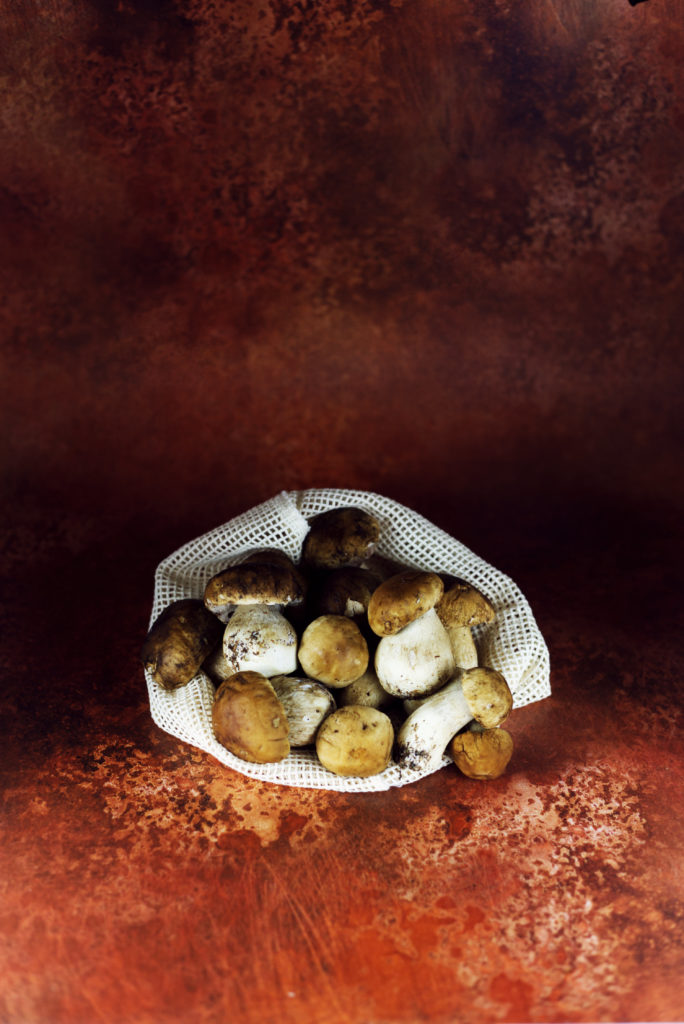
It’s autumn
It’s autumn and all Malbec grapes have been harvested in the region around Cahors. The grape juice of the new vintage has finished its alcoholic fermentation and has been turned into wine, and nature is now unfolding its final autumn spectacle right before our eyes: leaves of all colors and shapes flying in the wind, cold November rain, and the scent of humidity and earthiness are leading us into winter’s cocooning season.
One of the typical flavors of this season can be found within the fascinating spectrum of mushrooms whose earthy underwood aromas rise from the humid soils as we take our autumn walks. Harvesting mushrooms by hand in the forest is the privilege of knowledgeable connoisseurs and adventurers; however, more risk-averse souls can find many seasonal varieties at farmers’ markets.
The kings of the mushrooms
Mushrooms come in many shades of brown with slightly different tastes, but porcini mushrooms, also called cèpes, are the kings of the culinary world, and their majestic size and characteristically rounded brown hats overshadow most other edible mushrooms. Unlike button mushrooms, which can be found in most supermarkets, porcini are difficult to cultivate; these fungi depend on distinctive symbiotic connections with living trees, and thrive best in oak, chestnut, or pine tree forests, where they produce their edible fruit bodies in late summer and autumn. The abundantly wooded regions of France – in particular, in the southwest, including the region around Cahors – meet the criteria for porcini to develop; thus they have become an ingredient in many local specialties of the southwest.
Aromatic intensity and a chewy texture make porcini stand out from other mushrooms, whose textures are usually more fragile, and whose aromas are often more delicate. Porcini have a generous and sturdy bite and a unique flavor that ranges somewhere between hazelnut nuttiness, warm earthiness, soft creaminess, and umami heartiness.
Although the porcini seasons are relatively short, the harvest can be very meager or plentiful depending on the season’s weather, and porcini can be widely found as a dried ingredient in supermarket aisles, sliced or powdered. You can easily substitute fresh porcini with dried slices or chunks by simply soaking them in warm water or broth, but make sure to keep the delicious soaking water and use it in a soup, sauce, or risotto, to add depth and complexity.
Keep it simple
Carefully cleaned with a dry kitchen towel or a special mushroom brush, and most importantly, never rinsed under water, fresh porcini bring tons of flavor to any dish. Thinly sliced into a carpaccio, the freshest porcini present their delicate, mellow creaminess and supple earthiness, but pan-seared at a medium-high temperature, they reveal their full bandwidth and aromatic power, adding a delicate smoky dimension and the nuance of toasted nut aromas.
Pan-seared in butter with no more than a hint of garlic and a sprig of thyme or rosemary, porcini are a delicacy in themselves, to be savored on their own, or on a crunchy slice of grilled pain de campagne slathered with fresh butter. But they are also great for further preparations in soups, sauces, stews, risottos, pasta dishes, or even pâté.
To appreciate the porcini’s natural greatness, keep the seasoning as uncomplicated as possible, using sea salt, freshly cracked pepper, olive oil or butter, and fresh herbs; and pair it with simple yet high-quality ingredients that stand up to the mushroom king’s nobility – along with a bottle of Cahors, of course.
How to pair Cahors wine with porcini mushrooms?
Depending on your dish’s intensity and the other main ingredients, you can choose from the wide range of traditional Cahors styles that have undergone oak aging in barrels or wooden casks. Wines with shorter oak aging periods discreetly bring subtle spice and fruity abundance to your pairing, while wines with longer oak aging add more structure, underwood, spice, and depth.
For more inspiration, we are presenting two porcini recipes that will certainly impress your wine-loving invitees: an easy to make Tarte aux Cèpes that can be prepared in advance and served as an amuse-bouche or starter, and Purple Tagliatelle with Porcini and Beef, a super versatile dish for any weekday night or special occasion that requires a soul-warming treat.
Purple Tagliatelle with Porcini and Beef Recipe
Serve warm as a main dish.
Ingredients for 4 portions:
- 350 g beef fillet (or another tender cut)
- 2 tbsp soy sauce
- 400 g fresh porcini (or 75 g dried porcini: see alternative instructions)
- 3 tbsp unsalted butter
- 2 tbsp olive oil
- 1 garlic clove
- 2 shallots, peeled and finely diced
- 400 ml red wine
- 200 ml beef stock
- 1 bay leaf
- 100 ml heavy cream
- 300 g tagliatelle
- Sea salt and pepper
Steps to Make It :
- Place the beef on a tray and rub it with soy sauce and freshly cracked pepper. Cover and set aside to marinate.
- Remove the earth and any dirty bits from the porcini and their stems by gently rubbing with a dry cloth or paper towels, or use a special mushroom brush. Especially crusty parts can be easily cleaned by scraping with a sharp knife. Once cleaned, cut the porcini into big, generous chunks. Alternative preparation for dried porcini: Soak the dried porcini in the red wine for one hour. Pass the wine through a sieve, separating the wine and the porcini.
- Melt 2 tbsp of butter in a heavy pan over a medium-high temperature, add 1 tbsp olive oil and the unpeeled garlic clove, and bring to smoking point. Brown the porcini for a few minutes, making sure to shake the pan frequently. Transfer the porcini to a plate once they are browned on all sides.
- Melt 1 tbsp of butter in a big saucepan over medium heat. Add the shallots and sauté for 3–4 minutes until they have fully softened and become translucent. Add the red wine, beef stock and bay leaf, and let the liquid reduce to half of its volume. Then add the cream, season with salt and pepper to taste, and simmer over low heat as you prepare the pasta and the beef.
- Bring salted water to the boil in a big pasta pot. Cook the tagliatelle al dente following the package instructions.
- Using the same saucepan you used for the porcini, add 1 tbsp of olive oil and quickly pan-sear the beef. Cut into fine slices and keep warm.
- Drain the pasta and keep the cooking water. Add the tagliatelle to the saucepan and mix thoroughly, using a few spoonfuls of the pasta cooking water to cover the pasta in a silky layer. Finally, add in the porcini and stir well.
- Dress the pasta on a plate, top with the beef strips, and serve with a glass of Cahors wine!
Wine recommendation:
This recipe matches perfectly with a Cahors aged in oak barrels for 20 months or longer, giving intense structure and grip to the wine. Supplementary bottle aging will be beneficial, rendering the wine even more multi-dimensional, and underlining the depth and richness of this luxurious dish.
© Stefanie Köhler, Gouttes & goûts



